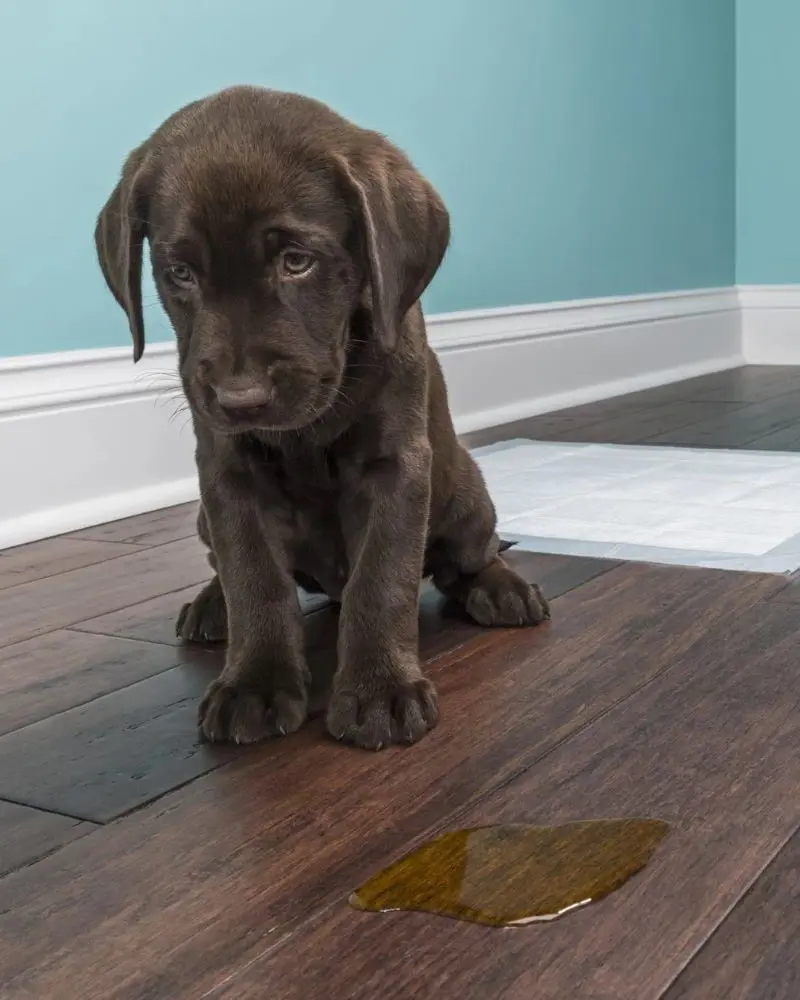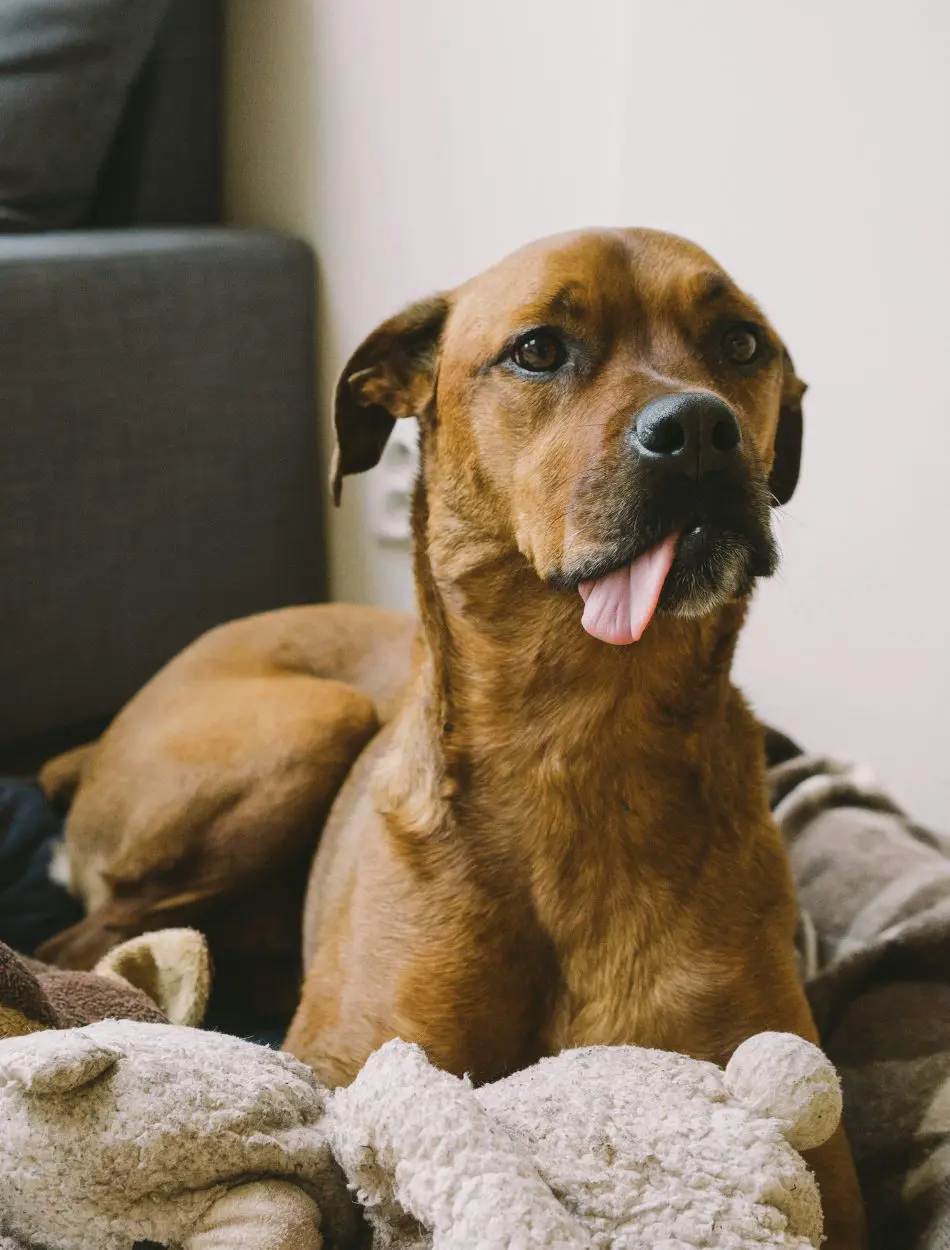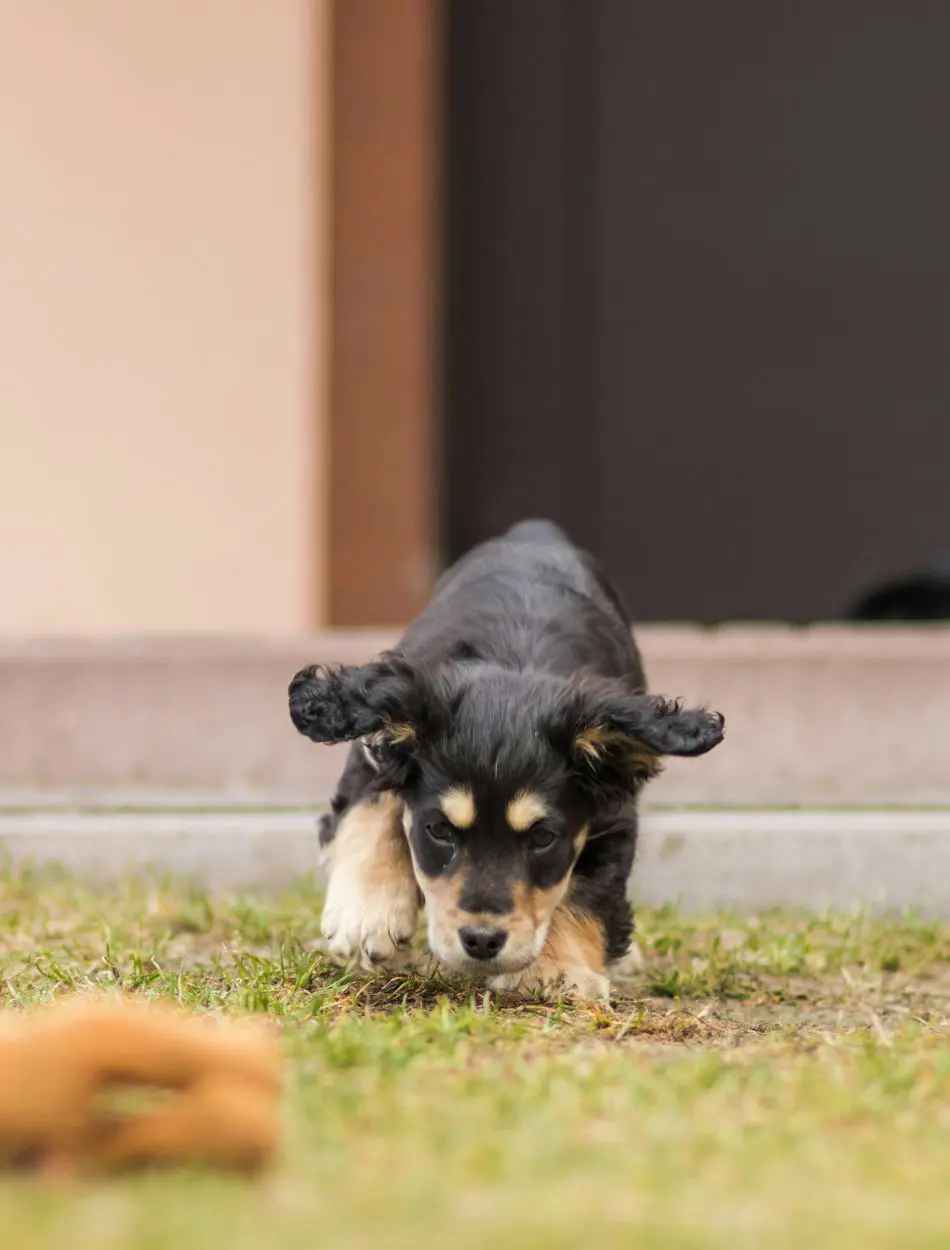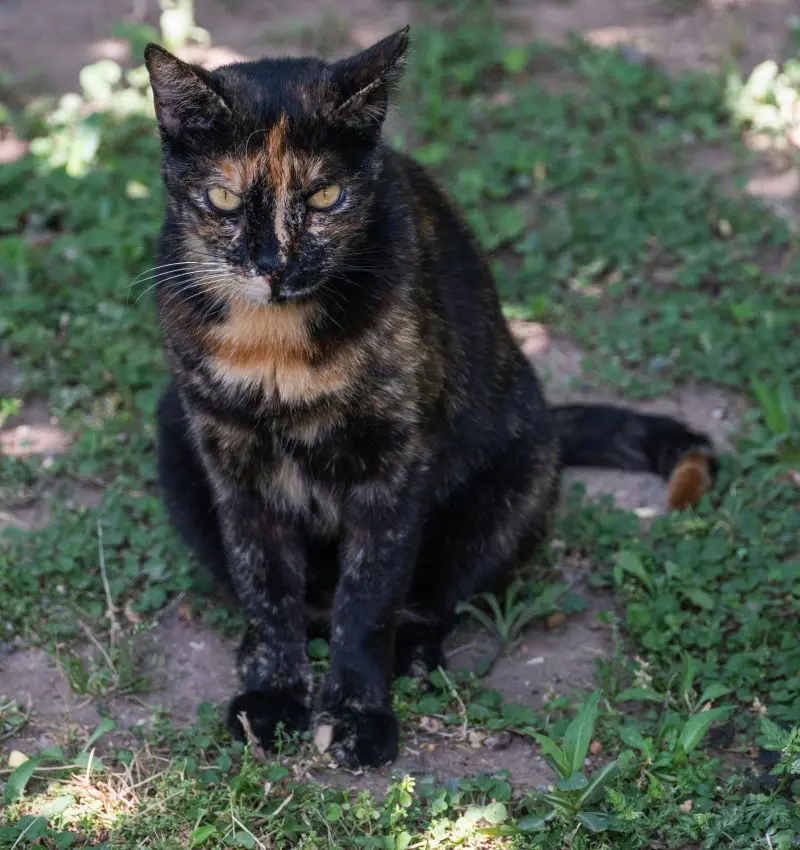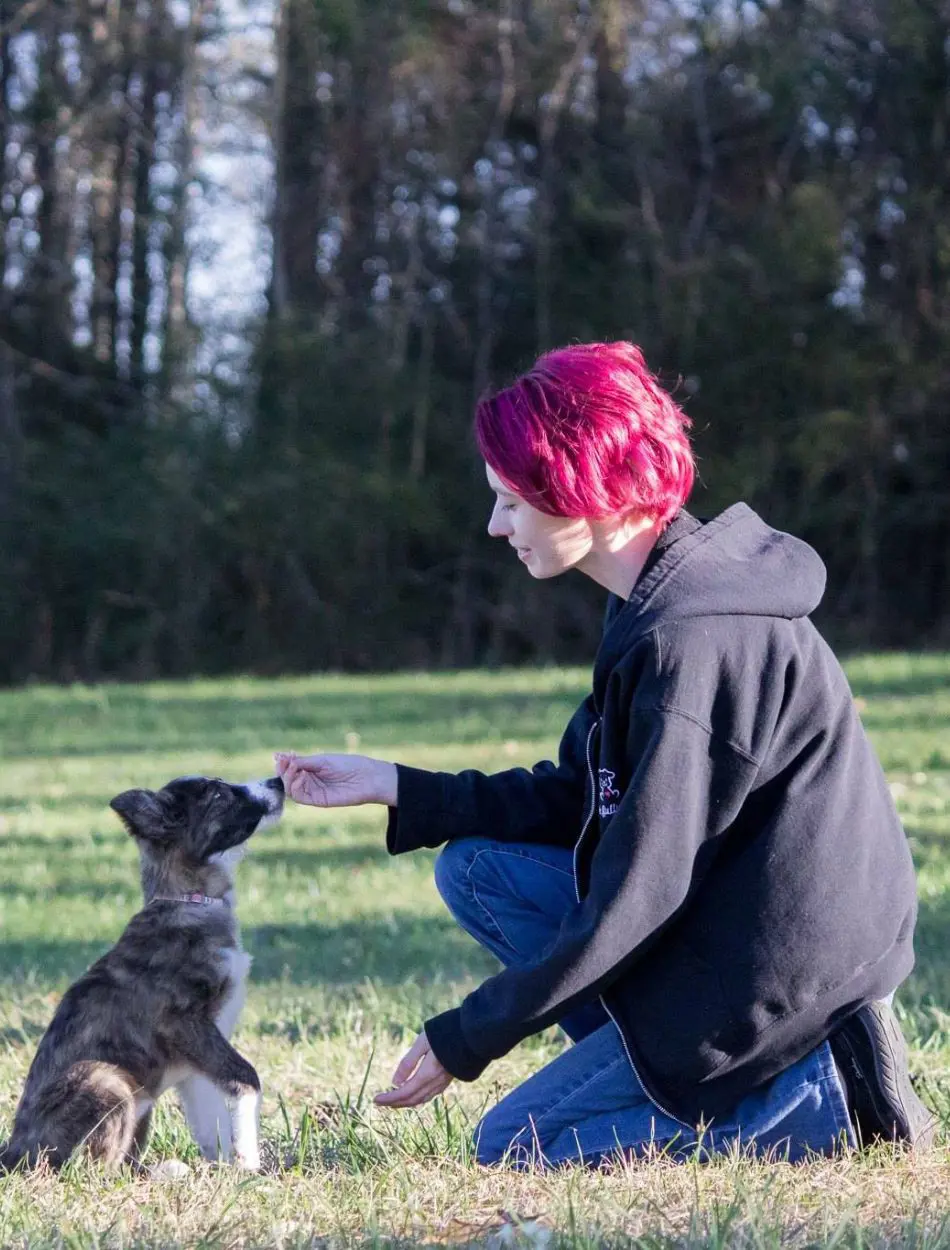18 Reasons Why Your Dog Is Not Eating
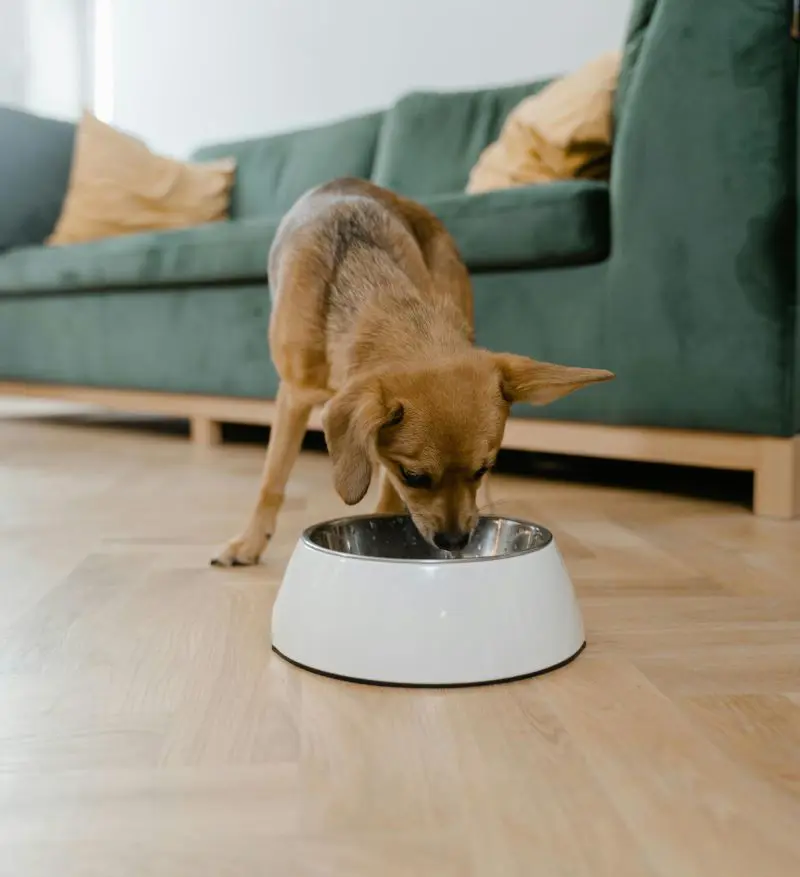
A skipped meal here or there is normal, but your dog consistently refusing the food is the cause of concern. The reasons are wider, ranging from dietary issues to more serious medical conditions and behavioral issues.
Your dog might be a picky eater or there might be something going on with your dog, further restricting the given food. Understanding the potential causes behind your dog's reduced appetite can help you get them back to enjoying mealtimes and feeling their best.
My Dog Won't Eat Dog Food
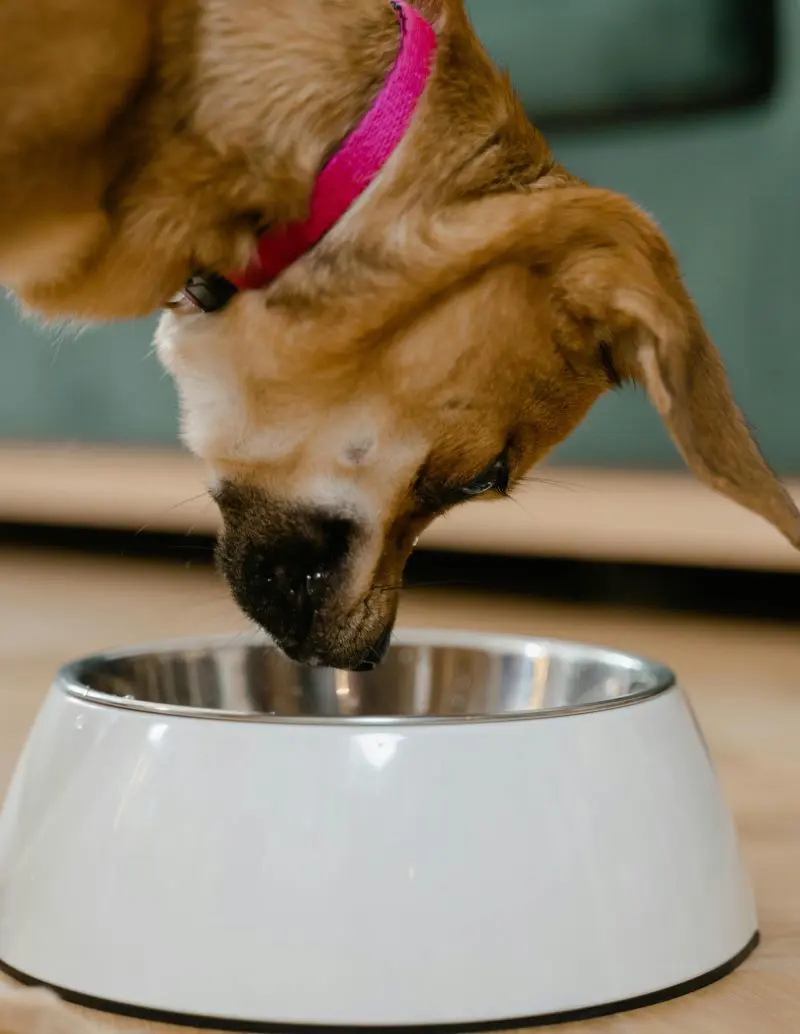
Your dog's appetite is regulated by the complex mechanism that involves the brain, the fullness and distention of their stomach and intestines, and specific hormones. Some medical conditions, behavioral conditions, environmental changes, and issues with the food itself can alter the dog's appetite.
When a dog doesn't want to eat food properly, this is called anorexia. On the other hand, if the dog has a decreased appetite but still eats some food, we call this hypoxia. If your dog hasn't eaten in 24 hours, it is best to call your vet, especially if there are any troubling concerns related to their health.
Symptoms Of Loss Of Appetite In Dogs
If your dog shows any of these symptoms, it is better to scroll down and learn its causes and solutions:
- Consuming less food than usual
- Refusing to eat treats
- A lack of enthusiasm for food
- Loss of weight
- Weakness / Lethargy
- Vomiting
1. Dental Problems
Your dog may not want to eat because something in their mouth might be causing pain. Sometimes things can happen below their gumline that can't be seen like tooth rot abscess.
Just like a toothache in humans, your pup may not feel much like eating if something is hurting in their mouth so it's better to check your dog's mouth for anything stuck in their teeth or gums. Signs of larger dental problems include a foul smell, loose teeth, or lots of tarter build-up. If you find any of these, make sure to see the vet right away and remember to brush your teeth regularly and take a dental checkup at least once a year.
2. Illness

Another reason for decreased appetite in dogs is sickness if your dog exhibits other symptoms simultaneously at the same time. Although a loss of appetite in dogs doesn't indicate serious disease attention is crucial because it can be a sign of significant illness and various systematic infections, pain, and liver problems.
Bacterial infections, kidney problems, digestive complaints, and other conditions can result in your dog refusing to eat. If this is accompanied by temperature or vomiting, you need to consult a vet to rule out the possibility of serious illness hampering your appetite.
3. Environmental Changes
Changes in the environment or routine upset your dog sometimes and put them off their food-eating habits for a while, causing appetite loss. If your pup recently experienced a stressful event, this may be the cause.
Normally, once the initial anxiety surpasses, they will return to their normal eating habits. If you went on a trip with them or moved to a new location, it may be that your dog won't eat due to traveling or the unfamiliar surroundings. Some animals may get motion sickness, and others become nervous or uncomfortable in new environments.
4. Stress
Just as human appetite suffers after any traumatic event, dogs also respond to changes in their living by not eating in proper quantity. The loss of a pet parent or fur buddy or moving to a new home can lead to stress, and further loss of appetite.
Anticipating major changes to your dog's life and minimizing it can help them keep up to their normal routine. Acting out in other ways, such as soiling the floor, can be signs that some increased stress is at play. Here are a few things you can do to reduce your dog's stress:
- Fresh air, exercise, and distractions can lower their stress level.
- Set some time to play with their favorite or a new toy, or pick up a brain puzzle.
- Cuddle where your attention is on them only. Stroking and petting will be relaxing and calming for both of you.
- Do some training exercises to bond and give your pup something new to focus on.
5. Overfeeding
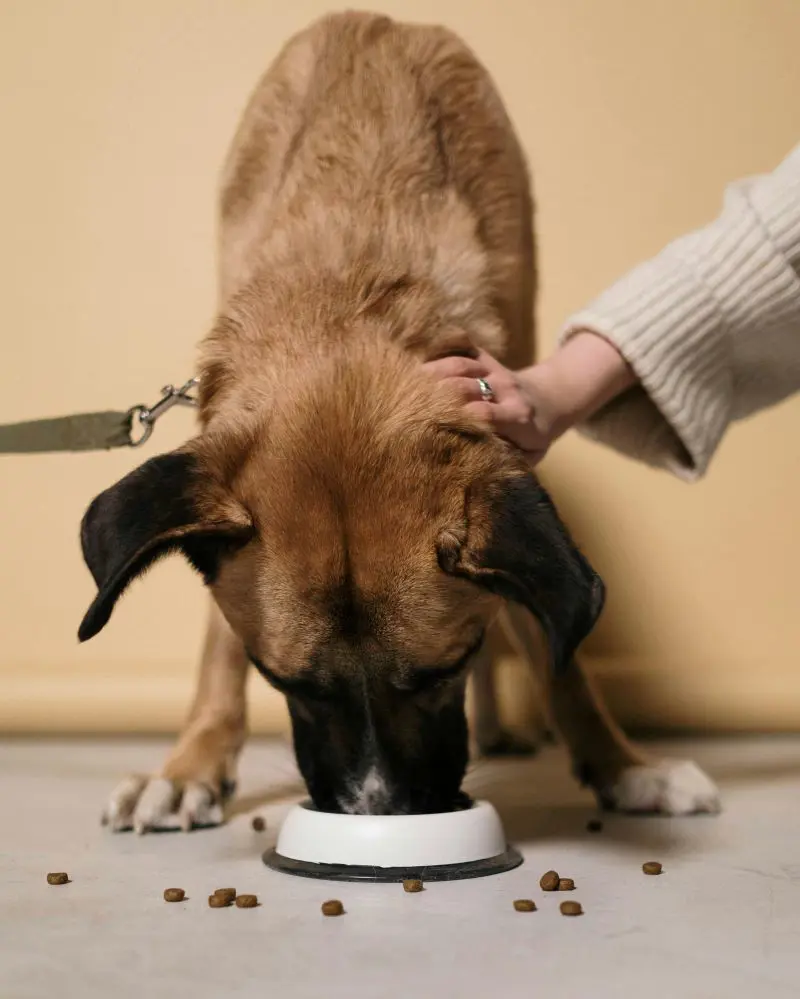
Sometimes, there may not be any medical or behavioral problems causing your dog to refuse their dinner. Or, they might not be too hungry. Overeating can hurt the digestive system, causing bloating, gas, and discomfort, due to which your dog might hesitate to eat again.
Giving dogs too many treats or overfeeding in general is surprisingly easy to do. The suggested amount on food packaging typically overestimates the amount a normal dog needs. When a dog consistently consumes more calories than they need, their stomach becomes stretched which leads to a feeling of fullness for longer periods, suppressing their appetite for the next meal.
6. Gut Problems
Gut problems such as colitis, and gastritis, will often cause a reduced appetite for your dogs. However other symptoms such as diarrhea or vomiting will come before a reduced appetite. A rumbling tummy can turn mealtime into a battleground for your dog.
Dietary indiscretion or infections from worms or parasites can lead to vomiting, diarrhea, and abdominal pain, making your dog avoid food. Also, dogs are sensitive to certain ingredients in their food, due to which they can trigger digestive issues and a decrease in appetite. Constipation also causes a severe reduction in a dog's appetite. Take them to your vet if they show signs of painful belly, vomiting, or diarrhea.
7. Pain Or Injury
A lack of appetite can be a symptom of pain anywhere in your dog's body. Many illnesses or injuries can cause pain or cause an infection or dental issues. Even back pain or arthritis pain can make getting to the food dish challenging for pups.
Pain can also result from stomach issues caused by a virus or eating too many table scraps. Many human foods are rich in fat and sodium, causing digestive issues for dogs. Other times tummy pain occurs when a dog gets into something they shouldn't, including:
- Garbage
- Chocolates
- Caffeine
- Other toxic substances
8. Behavioral Issues
Sometimes a dog's refusal to eat is behavioral and related to their circumstances or surroundings. For example, feeding your dog around other dogs or in the same area as a food-aggressive dog may cause your dog anxiety and changes in behaviors.
Dogs experience similar emotional and mental health conditions as humans. Some examples of behaviors that cause decreased appetite include stress, fear, anxiety, phobias, and cognitive decline in senior dogs. Try feeding your dog in a designated spot at mealtime, free from distractions. If you have multiple dogs, then ensure each dog has a spot for their food dish.
9. Food Bowl Size And Placement
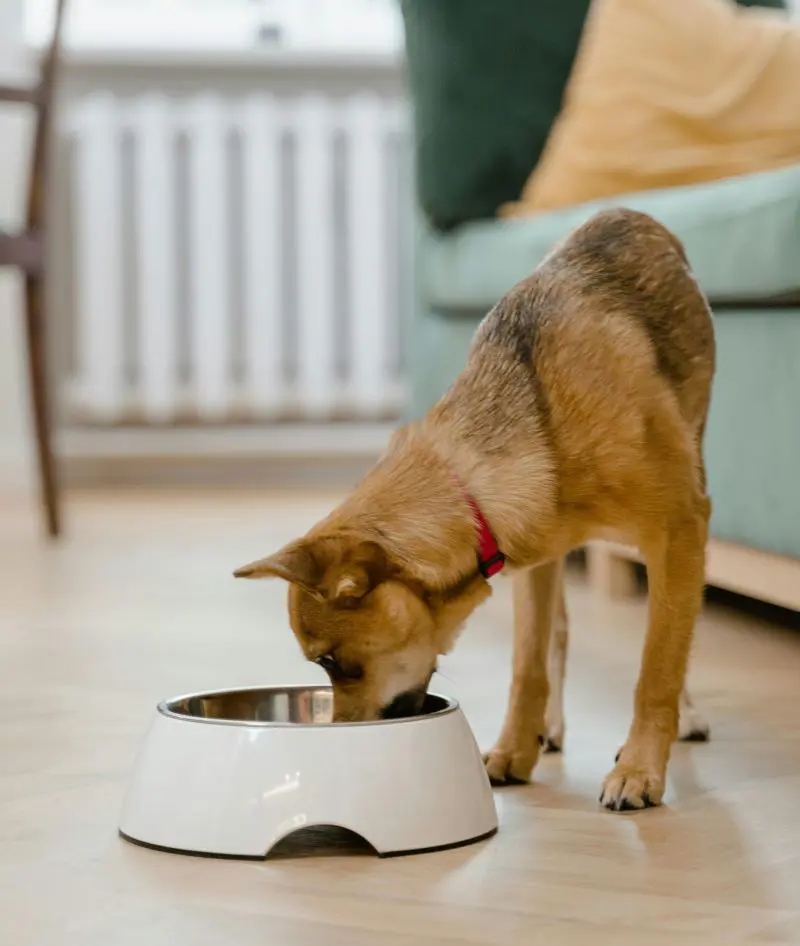
Some dogs develop issues regarding the type or height of their food dishes. Some dogs prefer plastic bowls, while others prefer glass or metal bowls. Therefore, you need to tailor your dog's food dishes to their needs.
For example, an older dog with arthritis may be most comfortable eating from bowls on a raised platform. On the other hand, dog breeds with flat faces, such as pugs or French bulldogs, often need a wide, shallow dish to best reach their food. And be sure to regularly clean your dog's food bowls as any leftover food won't lend itself to an appetizing situation for your furry friend.
10. Age
Healthy senior dogs have lower calorie requirements than the younger ones, so you may notice a slight decrease in appetite as your dog gets older. Puppies up to 1-year-old, grow rapidly and require energy so they eat more frequently than adult dogs, depending on their breed size.
On the other hand, the adult dogs reach their full size and their energy will decrease, so might their appetite. Feeding these adult dogs with appropriate portion sizes is crucial for maintaining a healthy weight. Also, the sense of smell and taste diminishes with age which can make their food less appealing leading to a decreased appetite.
11. Owner Absence

Some dogs won't touch their food while you are out but will start eating as soon as you walk back near to them in the door. Dogs pack animals by nature and feel more comfortable eating when their human companions are home.
If your dog is used to eating at specific times when you are around, the sudden change in routine due to your absence can disrupt their eating habits. Also, if they are left alone for extended periods with limited stimulation, boredom can set in and might lose interest in their food due to a lack of activity or mental engagement.
12. Frequent Changes In Food
When it comes to food, eating the same thing might be true for humans but the same doesn't apply to dogs. Dogs are creatures of habit, the canine digestive tract is not designed for frequent changes to their food, and the response can lead to stress, diarrhea, or other complaints.
If you regularly change or vary the food, your dog may develop a strong preference and end up refusing certain varieties of food. Desired changes in food should always be tackled slowly and you should stick to one variety once. fulfill your dog's needs. Some dogs need longer, for example, to make the switch from wet to dry food.
13. Picky Eater

If your dog is not turning their nose up at everything, but is only refusing certain foods, that's a good sign stating nothing seriously wrong. You must have a picky eater on your hands.
This problem occurs more often in dogs who have been fed various food options, and who get table scraps or fed at inconsistent times. The puppies are notoriously fussy eaters. If you notice your new puppy refusing to eat, this doesn't mean your dog is sick, it means they may need time to adjust to their new life, and you can experiment with their food. If your dog craves getting human food treats regularly, they may turn their nose up hoping something better might come.
14. Vaccinations And Medications
Sometimes, vaccinations can cause mild lethargy or soreness, causing your dog's appetite to dip temporarily. Though this may last 24 hours, if your dog isn't interested in a meal immediately after vaccination, then offer a regular meal after that.
On the other hand, if your pup has recently been put on a new medication, then the drug might upset their stomach sometimes. Certain medications may have side effects like nausea, vomiting, or stomach upset. These side effects make eating uncomfortable and unappealing for your dog. Some medications can temporarily affect a dog's sense of taste, as the food once eaten can be less appealing with a dulled sense of smell.
15. Food Quality
Food quality plays a crucial role in a dog's eating habits. Premium dog foods use fresh, whole ingredients like meat, poultry, and vegetables. These natural ingredients are more appealing to dog's sense of smell and taste, making the food more enticing.
If your dog turns their nose up at their food, then it might be a sign the current food lacks appeal and needs an upgrade. Also, the lethargy and lack of enthusiasm for walks or playing might suggest your dog isn't getting the energy they need from their food.
16. Boredom with Food
Boredom with Food is a surprisingly common reason why dogs might stop eating. Just like humans, dogs can become tired of eating the same meal day after day.
While consistency is essential for a dog’s diet, offering the same flavor, texture, and type of food for an extended period can lead to disinterest. This is especially true for dogs with a more refined palate or those used to a variety of treats or table scraps.
17. Depression
When a dog is depressed, they may lose interest in activities they once enjoyed, including eating. The decline in appetite is often gradual, with dogs eating less over time or refusing meals altogether.
Depression can also manifest in other ways, such as excessive sleeping, withdrawal from social interaction, or a lack of energy.
Dog owners need to recognize these signs and address the root cause of depression. Providing extra attention, engaging in regular exercise, and introducing new activities can help lift a dog’s spirits.
18. Heat
Heat can be a significant factor causing a dog to lose its appetite. Dogs, especially those with thick coats or brachycephalic breeds like Bulldogs or Pugs, are particularly susceptible to the effects of hot weather.
When the temperature rises, a dog’s body works harder to cool down, which can lead to a decreased appetite. Just as humans may feel less inclined to eat a heavy meal on a hot day, dogs may also prefer to skip meals or eat less.
Tips On How To Get Your Dog To Eat Again
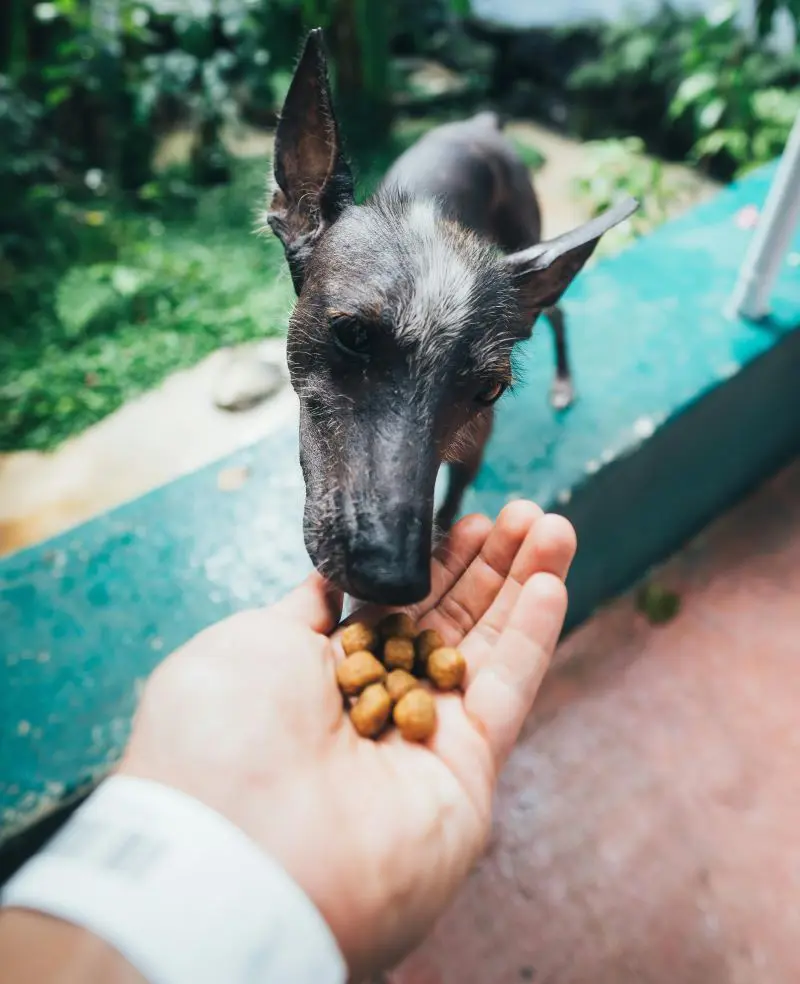
If you are sure that your dog has no serious medical issues to blame for reduced dog appetite, then try these ways below to tempt them to eat:
1. Rotate Through Several Alternative Dog Foods
Try a few different flavors, mix dry and wet food, or switch between dry and wet to check if another food appeals more to your dog or not. Ensure you make any changes slowly, to not upset their stomach so that they will stop eating.
2. Add Tasty Toppings
Mix in a little human food to see if this way does the trick or not. Good options to mix include plain chicken, fish, or a little low sodium-based beef or chicken broth, steamed or boiled butternut squash, sweet potatoes, or pumpkin.
3. Warm Up The Food Before Serving
Just as humans prefer to eat nice and warm meals, dogs also want to have warm meals to enjoy. You can add a little warm water, just a tablespoon, or pop the food in a microwave briefly so that the food becomes warmer and is easy to eat. Make sure that the food is not too hot so that your dog doesn't burn their tongue.
4. Go For A Walk Before Meals
Make sure your dog is well-exercised before you feed them, to help them build up an appetite. You need to take your pup for a walk before meals so that they can eat smoothly when returning before meals.
5. Feed Consistently
Feed your pup by dividing their meals into two or three and serving them at consistent times each day. Don't leave the food out for your dog to graze on and take it back within 10 minutes if not eaten. Offer meals for short periods, which leaves your dog no choice but to eat their food.
Recent posts
Dogs
Why Do Dogs Pee In The House?
Uncontrolled peeing inside the house is usually perceived as a sign of a poorly-disciplined dog. However, it may not always be true as the canine could be suffering from a medical issue or cognitive decline. And, getting made is not the solution as y...
Dog Sleeping Positions And Their Meanings
The diverse sleeping dog positions of our furry companions unveil a fascinating tapestry of behaviors and emotions in the canine realm. From the classic Curler to the enigmatic Superman, each posture conveys a unique message about a dog's well-being ...
Dog In Heat: When It Happens And How Long Does It Last
A female dog will get to the phase of reproduction known as the heat cycle if she has not been spayed. If you have an unspayed female dog, it's vital to understand the stages of her heat cycle. During heat, a canine's conduct may additionally c...
15 Causes of Dog Losing Hair
Occasional hair loss and shedding is a natural physical process in dogs. Seasonal shedding helps remove dead and excessive hair from their body. But, when a dog starts losing excessive hair, it can be a terrifying sight for pet owners. Often, dog par...
18 Signs A Dog is Dying
Recognizing the signs that a dog is dying can be heartbreaking, but it's far more essential to offer comfort in their final days. The signs consist of changes in behavior and constant hunger indicating that it may be time to say good-bye. Owners who...
15 Reasons Why Dogs Eat Poop And How To Stop It
Dogs sometimes engage in odd and unhealthy behaviors, along with ingesting their poop or that of different animals. This habit may be concerning and disgusting for any pup owners. This habit has many motives, however, the secret is locating eff...
